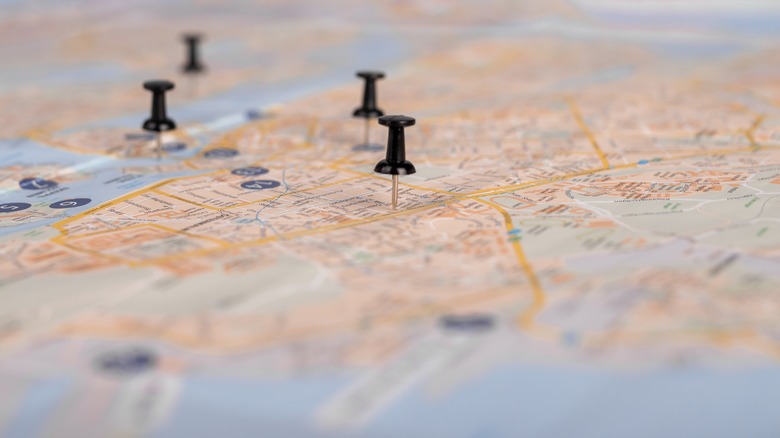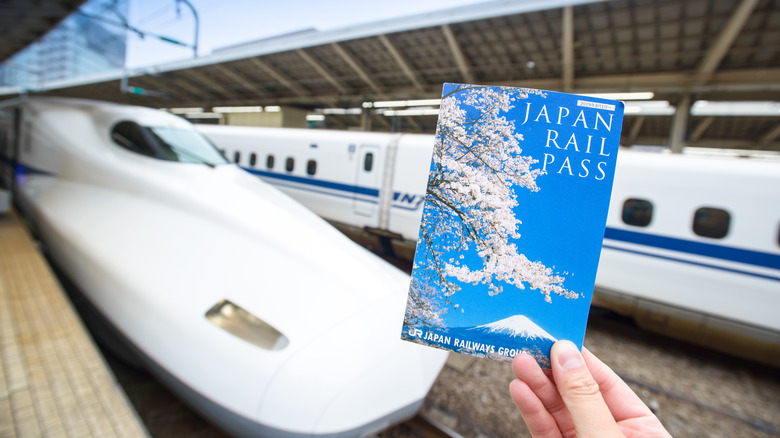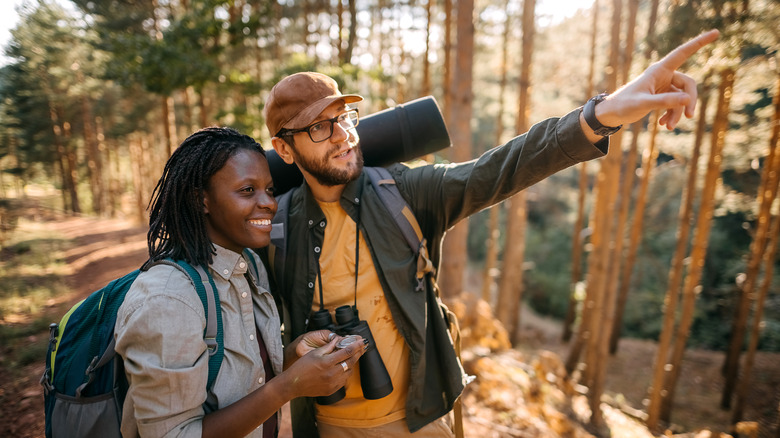Traveling solo can be an enriching experience, offering freedom, personal growth, and the thrill of self-reliance. However, for those with a terrible sense of direction, wandering alone on unfamiliar turf can be pretty stressful. Fear not! Even the most directionally challenged can enjoy solo adventures with the right strategies. Whether it’s mastering the art of map reading, leveraging the latest digital tools, or learning how to be street smart, these tips will help boost your directional confidence and ensure that getting a little lost becomes part of the journey, not a roadblock.
Start by embracing technology to your advantage; GPS apps like Google Maps or Waze are a must. They are a solo traveler’s best friend, with real-time directions to where you need to go. Moreover, you’ll find new points of interest just by browsing the map! Depending on where you are, you can use Wi-Fi or purchase a local SIM card to have a regular Internet connection. Downloading maps for offline use can ensure you’re covered in areas with limited connection.
Don’t forget to explore traveler-specific apps for local guides and transport information. For hikers and outdoor enthusiasts, AllTrails is a must-have with its expansive database of trail maps, user photos of different locations, and elevation guides. Public transit and ride-hailing apps (location and transit system dependent) can also help navigate everything from metro to motorbike taxis. Travel itinerary apps such as TripIt have built-in map and itinerary features to help your trip go off without a hitch.
Plan ahead with cartography and landmarks

The key to having a good travel day, and a good trip in general, is planning. If you struggle with finding your way, study the way beforehand. Plan your route meticulously. Learn everything you can about major landmarks, streets, and public transport — where they are located, what’s nearby, how the layout of the city functions, when buses operate, etc. Break down these bits of information into smaller, manageable parts. Focus your plan on getting from one landmark to another instead of trying to remember a long sequence of directions.
Studying maps before your arrival can be very helpful in preparing for your journey. If you’re a visual thinker, you can plop yourself on a two-dimensional mental map while en route. Identifying and remembering visual landmarks is crucial — use anything unique in the landscape, like a distinctive building, statue, or natural feature, to help orient yourself. As you explore, try to visualize your path and relate it to your starting point. This practice can improve your spatial awareness over time.
When leaving a place, try to start in the direction you came from and follow your own footsteps. For example, if you come in through the left-side door of the building, leave the same way. Location consistency in your travels can improve your understanding of the area’s layout and prevent you from getting lost. Always keep a physical copy of your map, itinerary, and important addresses as a backup for when your phone’s battery dies.
Public transportation and group tours

Depending on where and how you’re traveling, public transport might make navigation a whole lot easier. Berlin, Hong Kong, Stockholm, and many other metropolitan cities around the world are hailed for their impeccable transport systems. Spotless trains, timely service, and comprehensive networks — what more can you ask for? Plus, posted maps and signage at stations can make navigation effortless. Buses and trains typically follow specific routes that can help you understand the area’s layout. All you have to do is sit back and enjoy the ride.
For more stress-free exploration, consider joining a group tour — a lifesaver for solo travelers with a poor sense of direction. They offer expert-led explorations, ease logistical worries, and ensure safety, all while teaching you about new places without the stress of navigation. A group tour can be especially helpful in traversing hard-to-reach destinations, cities with a hectic layout, or places where signs are written in a language you cannot read. It’s also a great way to meet fellow travelers and enjoy shared experiences.
In urban areas, following the flow of pedestrians or road traffic is a very practical navigation tip. This natural flow usually leads to main streets or key landmarks, serving as a reliable guide to areas of interest and helping you orient yourself in the city’s layout. If you see tourist groups or people who “look” like travelers, they may be going where you’re going. When in doubt, follow the herd — no shame in that.
Unlock your inner explorer with essential travel gear

Eclipse_images/Getty Images
Packing smart is crucial for solo travelers. It means carrying essential travel gear like a portable charger to keep your devices powered, a universal power adapter, a physical or offline map as a reliable backup, and a small phrasebook or translator app for language barriers. A basic understanding of how to use a compass can be very useful, especially in remote areas or when hiking. These tools ensure you’re prepared for every possible scenario, from tech failures to finding true north while in the middle of nowhere.
If journaling is something you like, a travel diary could turn into much more than just a place to record your memories; it can also work as a navigational aid. You can build up your spatial memory by jotting down routes and landmarks or even drawing mini-maps. This habit, even when done just a few times throughout the day, can cultivate a deeper awareness of your surroundings and help you navigate more effectively.
Whether you have a pro jumbo DSLR or a pocket-size iPhone, a camera can be exceptionally helpful for the directionally challenged. Take pictures of landmarks, street names, or other unique features along your route, but not just for Instagram — these photos can serve as visual cues when you need to retrace your steps. Depending on your device, the photo can display the stored GPS location data of where exactly it was taken.
Street smarts and traveling like a local

Leopatrizi/Getty Images
Being a street-smart traveler is an acquired skill. To some, it may come more naturally, but generally, it doesn’t happen overnight. Ultimately, street smarts amount to safety and safety is paramount, especially when you’re a solo, directionally-challenged human in a foreign country. So, as per Travel 101, always stick to well-lit public areas, particularly at night, and keep someone informed about your itinerary. If you’re staying at a hotel, telling the concierge about your whereabouts is a good idea.
Also, learning basic phrases in the local language, especially directions-related ones, can be a lifesaver. Important words and phrases to know include: where is (blank); directions (left, right, back straight); can you show me, help me, etc. And, of course, hello, please, and thank you, in the local language, will go a long way. Don’t hesitate to ask locals for directions; often, they’re the best guides you can find. People generally like to help, which can also be an opportunity for a friendly interaction.
A veteran street-smart travel tip: Don’t look lost, even if you might be. Why? Because it will make you a target for bad apples — muggers and pickpocketers, relentless tuk-tuk drivers who will overcharge you for a five-minute ride, fake tour guides, and other types of tourist scammers. The more lost you look, the more you look like a tourist. Instead, fake it till you make it — act like you know the streets, dress like a local, and walk with purpose.
Why some of us have a bad sense of direction

Praetorianphoto/Getty Images
Why is it that some of us are bestowed with the gift of an internal compass while others are not? A poor sense of direction can stem from various factors. Neurologically, it’s often linked to differences in the hippocampus and entorhinal cortex, brain regions involved in spatial orientation and memory. Some individuals may have less developed spatial awareness, making it challenging to form mental maps or recall routes. Genetics can also play a role, with some people being naturally predisposed to better navigational skills than others.
Additionally, over-reliance on technology for navigation can impede the development or maintenance of innate direction-finding abilities. People who frequently use GPS may not practice or refine their natural sense of direction, leading to increased dependence on these tools. Environmental factors and experiences, particularly during childhood, also have some influence. Regular exposure to varied environments can enhance spatial awareness, while a lack thereof might contribute to a weaker sense of direction.
But, at the end of the day, getting lost can sometimes be the best part of your adventure. It can lead you to places you wouldn’t have discovered otherwise and awaken your ability to problem solve. Being lost can help you gain profound insight into yourself and your destination in a very short amount of time. Trusting your instincts is also important — sometimes, your gut feeling can be more reliable than a map. Stay calm and remember that it’s okay to make mistakes while finding your way. In the wise words of J.R.R. Tolkien, “Not all those who wander are lost.” Consider embracing this mantra for your next travel journey.

